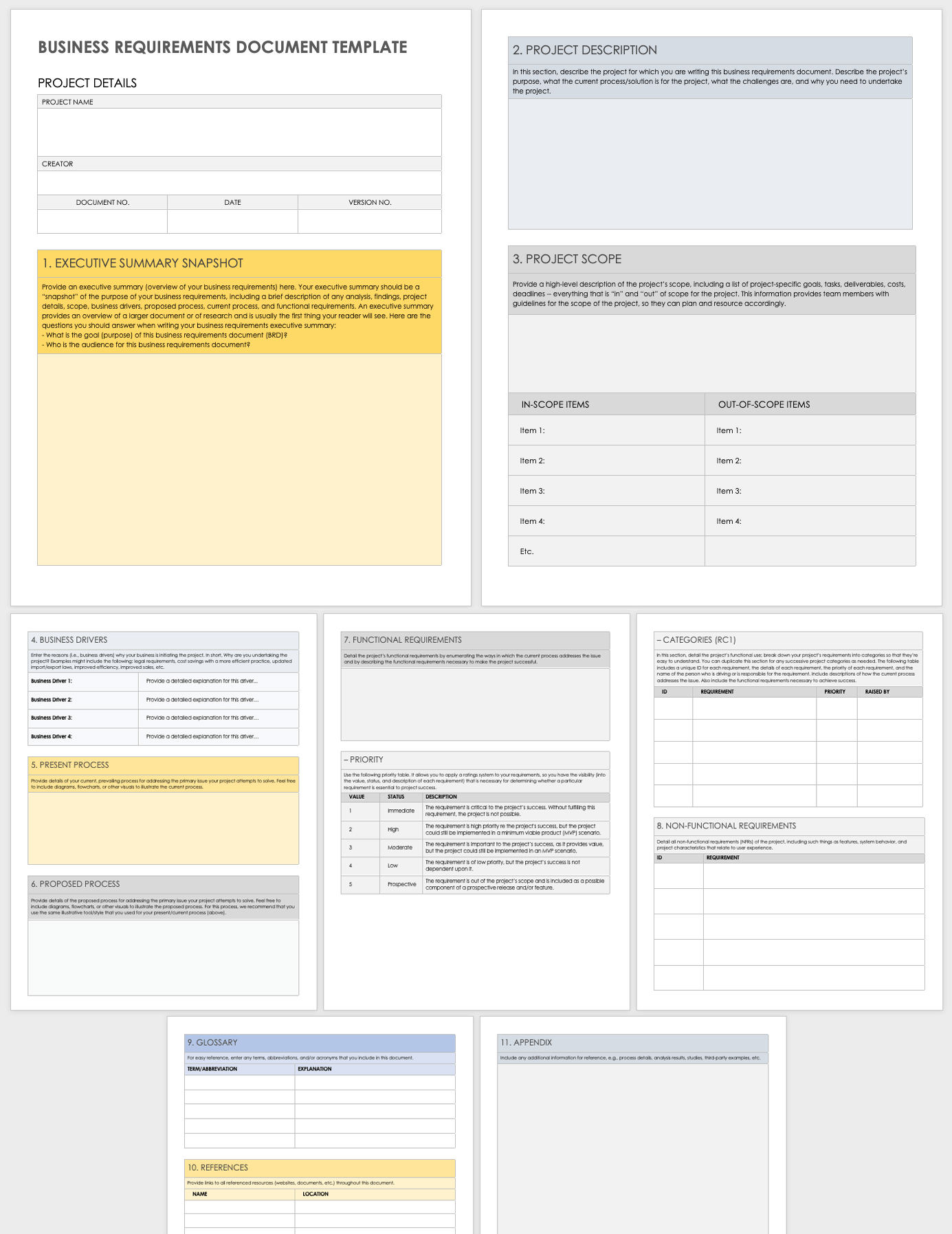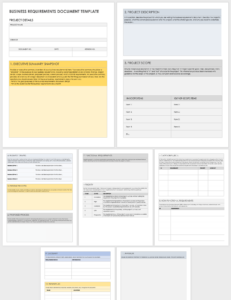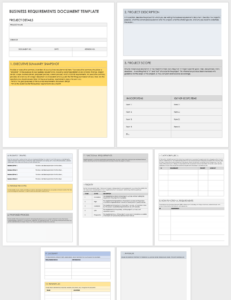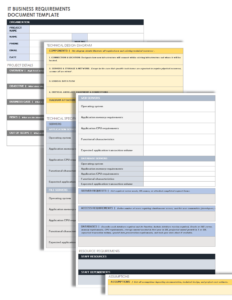A technical business requirements document (BRD) is a key deliverable in the software development process. It defines the functional and non-functional requirements of a system from the business perspective. The BRD serves as a bridge between the business and technical teams, ensuring that the developed system meets the business needs. Having a well-structured technical business requirements document template can streamline this process.
Before diving into the details of a technical business requirements document template, it’s essential to understand its significance. The BRD captures the specific expectations of the business stakeholders, eliminating ambiguity and misinterpretations during the development phase. It enables the technical team to design a system that accurately aligns with the business objectives. Furthermore, the BRD serves as a reference point throughout the project, providing clarity and reducing the risk of costly rework.

Structuring a Technical Business Requirements Document Template
A well-structured technical business requirements document template provides a clear framework for capturing and organizing the essential business requirements. The following sections outline the key elements:
1. Introduction: Begin with a brief overview of the project, including its purpose, scope, and intended audience. State the business problem or opportunity that the system aims to address.
2. Business Objectives: Clearly define the high-level business objectives that the system is expected to achieve. These objectives should align with the organization’s strategic goals.
3. Functional Requirements: Specify the specific functions that the system must perform to meet the business objectives. Use clear and concise language, avoiding technical jargon.
4. Non-Functional Requirements: Outline the system’s performance, security, reliability, and other non-functional requirements. These requirements define how the system should operate and ensure it meets the business needs.
5. Glossary: Include a glossary of terms and acronyms used throughout the document to ensure clarity and consistency.
Technical Business Requirements Document Template: Best Practices
To ensure the effectiveness of your technical business requirements document template, follow these best practices:
1. Use Clear and Concise Language: Write in a language that is easily understood by both business and technical stakeholders. Avoid technical jargon and use plain English whenever possible.
2. Involve Stakeholders: Engage stakeholders from the business and technical teams throughout the BRD development process. Their input and feedback will ensure that the document accurately reflects the business needs.
3. Prioritize Requirements: Identify and prioritize the most critical requirements. This will help the technical team focus on the most important aspects of the system during development.
4. Maintain Traceability: Establish a process to track the implementation of each requirement throughout the development cycle. This will ensure that all requirements are met and documented.
5. Review and Iterate: Regularly review the BRD with stakeholders and make necessary updates. The BRD should be a living document that evolves with the changing business needs and project requirements.
Conclusion
A well-structured technical business requirements document template is a valuable tool for capturing and documenting the business needs for software development projects. By following the outlined elements and best practices, you can create a BRD that effectively communicates the business objectives, functional and non-functional requirements, and provides a solid foundation for successful system development.
Remember, the technical business requirements document template is a key artifact that bridges the gap between business and technical teams. By investing time and effort in creating a comprehensive and well-organized BRD, you can significantly increase the likelihood of delivering a software system that meets the business needs and drives organizational success.


